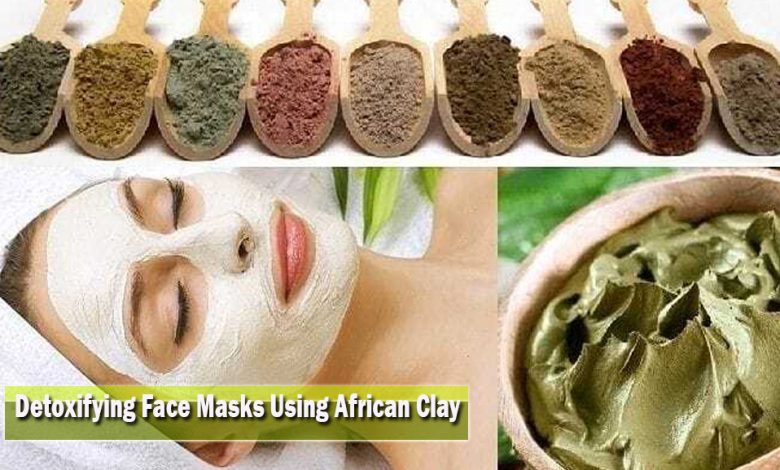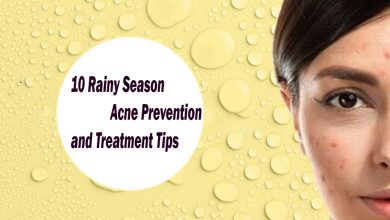Detoxifying Face Masks Using African Clay

Detoxifying Face Masks Using African Clay, using every guide on this blog post. African clay is a natural powder that comes from deep beneath the earth in places like Morocco and other parts of Africa. People use it to take care of their skin because it is full of gentle minerals like silica, magnesium, and calcium .
This clay is different from face wash because it doesn’t foam. Instead, it draws out dirt, oil, and little bits that stick to your skin . It helps make your skin softer, less red, and more glowing . There are special types of this clay:
- Rhassoul (Moroccan) clay – very gentle and helps clean, dry, and combination skin while making skin soft .
- Bentonite clay – like a sponge that soaks up oil and is good for breakouts .
- Kaolin clay – very gentle, so it’s good for sensitive and dry skin .
These natural clays have been used for thousands of years. Now, we can use them at home to make our skin feel happy and healthy.
What Is African Clay and Why It Great for Your Skin
African clay is a type of natural dirt from Africa that people use on their faces. There are many types of it, such as green clay, red clay, bentonite clay, and kaolin clay. Each kind has helpers within it, such as minerals and hydration, that cleanse, calm, and nourish your skin, making it glow.
For example, bentonite clay is very good at soaking up extra oil and dirt; it works like a sponge and helps fight breakouts by calming the skin . Green clay can soothe redness and inflammation, while kaolin clay is soft and gentle for sensitive skin .
Rhassoul, from Morocco, helps soften and smooth your face with its rich mineral content. Using African clay can help your skin look fresh, feel calm, and stay clean.
How African Clay Masks Work to Detoxify Your Skin
When we put clay on our faces, it does three big good things. First, it grabs and pulls out extra oil and dirt that block tiny holes in our skin. Second, it helps dry, inflamed spots by being soft and soothing, like green clay or kaolin clay.
Third, it helps blood move under the skin, making your face look brighter and healthier . But remember, you don’t want to do it every day because too much can make your skin dry. It’s best just 1–2 times a week.
Step-by-Step: Making a DIY African Clay Mask
You can easily make your face mask at home with just a few ingredients:
Choose your clay
- For oily or breakout‑prone skin, pick bentonite.
- For redness or dry skin, choose rhassoul or kaolin .
Mix
- Use 1 part clay and 2 parts water .
- Stir in a wooden or plastic bowl until it’s smooth. Avoid metal bowls .
Apply
- Spread a thin layer on clean skin, avoiding the eyes.
- Wait 10–15 minutes until it’s slightly dry but not cracked .
Rinse
- Use warm water, gently wash off, then pat your face dry.
- Finish with a soft moisturizer.
This mask gives your skin a fresh, clean boost. No fuss—just earth, water, and love.
Enhance Your Clay Mask with Natural Additions
Want even more from your mask? Try adding simple, natural helpers:
- Honey fights germs and makes skin soft.
- Aloe vera calms and hydrates dry or sensitive skin.
- Rose water or lavender water – gentle toners that add a calming scent .
- Tea tree oil drops – good for acne-prone skin because it fight bacteria .
- Apple cider vinegar – make the mix slightly fizz when added to bentonite, but use little if your skin is sensitive .
Adding these is easy: mix into your clay blend before applying, but keep the total amount small—just 1–2 teaspoons. These extras help balance, soothe, and refresh your skin.
How to Make and Use an African Clay Mask at Home
Making a clay mask at home is fun and easy! First, choose the right clay for your skin type: choose bentonite clay for oily or acne spots, green for redness, kaolin for gentle care, or rhassoul for softening.
Then, mix about 1 tablespoon of clay with enough clean water, rose water, or aloe vera juice until it becomes spreadable like yogurt. Wash your face gently, apply a thin layer of clay using your fingers or a brush, and let it sit 5–15 minutes .
Don’t let it dry too tightly—if it cracks, rinse earlier. Wash it off with warm water, pat your face dry, and follow with a gentle moisturizer. Use once or twice a week, not more.
How Clay Masks Detoxify and Clean Your Skin
When you mix African clay with water or other liquids, it becomes a soft paste that you can spread on your face. As it dries, the clay gently pulls out impurities like oil, dirt, and germs from your pores .
It’s like a little magnet cleaning little holes on your skin! Clay also soothes redness and inflammation, especially helpful for spotty or irritated skin.
Some clays, especially bentonite, have anti-bacterial and anti-inflammatory properties that help fight acne germs . They can even help tighten the skin and reduce pimples.
Using a clay mask brings fresh air to your skin and makes it feel soft like a new blanket. But only apply it once or twice a week, or it might make your skin too dry .
African Clay with Natural Helpers for Extra Skin Love
African clay can do even more when mixed with other natural friends. For calm skin, add a little honey—it fights germs and soothes redness.
To brighten, mix in rose water or a drop of lemon juice (just a little!). For extra hydration, blend the clay with a bit of aloe vera gel .
If your skin feels tight after masking, add jojoba or olive oil. These helpers bring vitamins, soothe your face, and make the mask extra nice. Just mix them with clay before applying. This homemade mask is natural, soft, and easy to make!
Popular Types of African Clay and Their Benefits
Rhassoul Clay (Moroccan Lava Clay)
- Origin: Morocco.
- Best For: Oily and combination skin.
- Benefits: Absorbs excess oil, tightens pores, and enhances softness.
Bentonite Clay
- Origin: Volcanic ash deposits.
- Best For: Acne-prone and sensitive skin.
- Benefits: Balances pH levels, reduces inflammation, and removes toxins.
Kaolin Clay
- Origin: Found in various parts of Africa.
- Best For: Dry and sensitive skin.
- Benefits: Gently cleanses, hydrates, and brightens.
African clay isn’t just for your face—it’s a versatile ingredient you can use for:
- Body Wraps: Purify and firm your skin with a detoxifying treatment.
- Scalp Treatments: Remove buildup and soothe irritation for healthy hair growth.
- Foot Masks: Refresh and soften tired feet.
For those who love DIY skincare, try these natural treatments:
- Aloe Vera Gel: Mix with clay to enhance hydration and provide soothing benefits.
- Apple Cider Vinegar Rinse: Mix with clay to balance pH and reduce dandruff on the scalp.
- Green Tea Rinse: Use green tea with clay to boost antioxidant benefits for your skin.
Pair your clay mask routine with healthy lifestyle habits to maximize results:
- Hydration: Drinking plenty of water will help maintain your skin’s moisture.
- Nutrition: Include nutritious foods like avocados, nuts, and leafy greens.
- Stress Management: Practice yoga or meditation to maintain a glowing complexion.
African Clay Masks from Brands You Can Try
If you want a ready-made mask, here are a few gentle, helpful ones:
- Detoxifying Mask with Bentonite, Baobab & Moringa—cleans deep and brightens skin.
- African Botanics Mineral Cleansing Mask—uses kaolin to clean and soothe.
- Inika Organic Green Clay Mask—contains kaolin, aloe vera, jojoba oil; nice for acne and dull skin .
- Africology Clay Masque—mix of bentonite + kaolin + African potato + moisturizing oils.
These masks do the same clay good things, but are ready to use. Just follow their instructions!
African Clay Masks You Can Buy
If you prefer ready-made masks, here are some popular and trusted options:
- Aztec Secret Indian Healing Clay – uses 100% calcium bentonite; best for deep cleaning oily skin
- PeauFresh Moroccan Rhassoul Clay Powder – rich in minerals that firm and detoxify
- Inika Organic Rhassoul Clay Mask – gentle, with aloe and jojoba for calming skin
- African Botanics Mineral Cleansing Mask – uses kaolin to soothe while cleansing .
These masks give you the Earth’s natural detox in an easy-to-use tub. Follow the instructions and enjoy!
Who Should Be Careful with African Clay Masks
Most people can enjoy clay masks, but some have to be careful. If your skin is very dry or feels itchy, or if it gets red or sunburned, choose gentle clay (like kaolin) and only use it once a week.
Always do a small test patch on your arm first—just a little bit. If your skin gets red or itchy, rinse it off and don’t use it. Don’t use clay on broken skin or open cuts. Clay can dry your skin a bit, so always follow with a light moisturizer. If you take strong medicines or have serious skin problems, it’s best to ask a skin doctor first .
African clay masks are safe for most people, but here are some tips to be extra gentle:
- Patch test first: Put a bit on your arm and wait 24 hours. If it’s itchy or red, don’t use it .
- Limit frequency: Use once a week, or at most twice if your skin tolerates it .
- For very dry or sensitive skin, use gentle clay like kaolin and moisturize right after.
- Avoid cracked or irritated skin—don’t use clay on open wounds.
- Skip metal bowls—clay may react. Use wooden, plastic, or glass bowls .
- If you’re on strong skin medicines or have eczema, ask your skin doctor before using clay.
These steps help keep your clay mask safe, gentle, and kind to your skin.
✅ FAQ – African Clay Masks
1. How often should I use an African clay mask?
Use it just 1–2 times a week. Too much can dry your skin or make it rough.
2. Which clay is best for oily skin with pimples?
Bentonite clay is best—it acts like a sponge, soaking up oil and cleaning pores.
3. What clay is gentle for dry and sensitive skin?
Kaolin clay—like white or pink clay—is very soft, cleans but doesn’t dry.
4. Can I use a clay mask on my hair?
Yes! Some types, like bentonite and rhassoul, help clean oily scalps and soften hair.
5. How long should the clay stay on my face?
Leave it 5–15 minutes until it’s slightly dry but not cracking.
6. What happens if the mask dries too much and cracks?
That means it’s too dry. Wash it off gently and use a moisturizer. Next time, wash off earlier.
7. Can kids use African clay masks?
Small kids have delicate skin. Women and bigger kids can use clay masks carefully. Use gentle clay like kaolin. Do a patch test first.
8. Can clay masks remove toxins from your body?
Clay masks clean surface dirt and oil, but they don’t pull out toxins like your liver does
🎉 Final Thoughts
Using African clay masks is like giving your skin a gentle spa day at home. They clean deep, calm skin, remove oil, and make your face feel fresh and bright. Choose the right clay for your skin type.
Use it just once or twice a week. Don’t let it dry completely, and always moisturize after. If you feel itchy, stop using it. Using clay carefully can help your skin glow and feel healthy, all from nature’s helping dirt!



